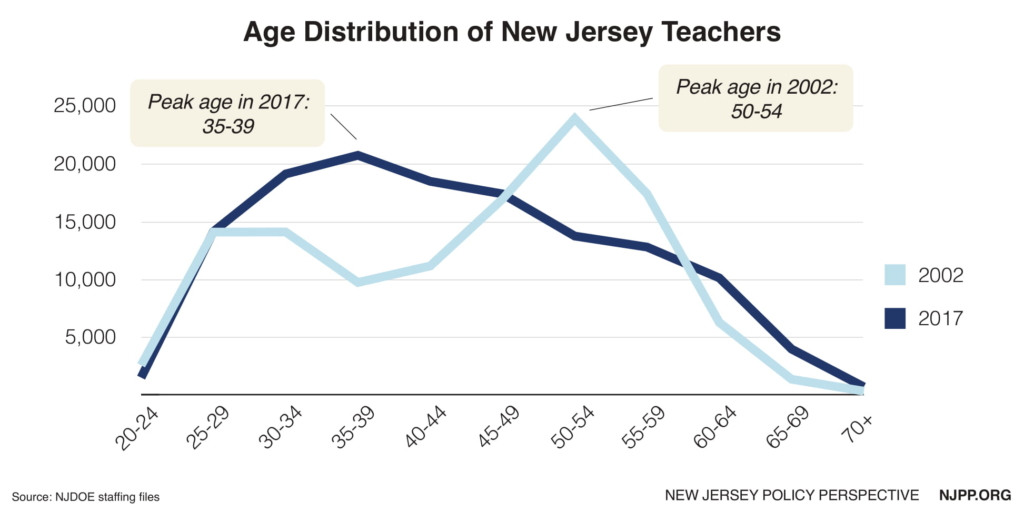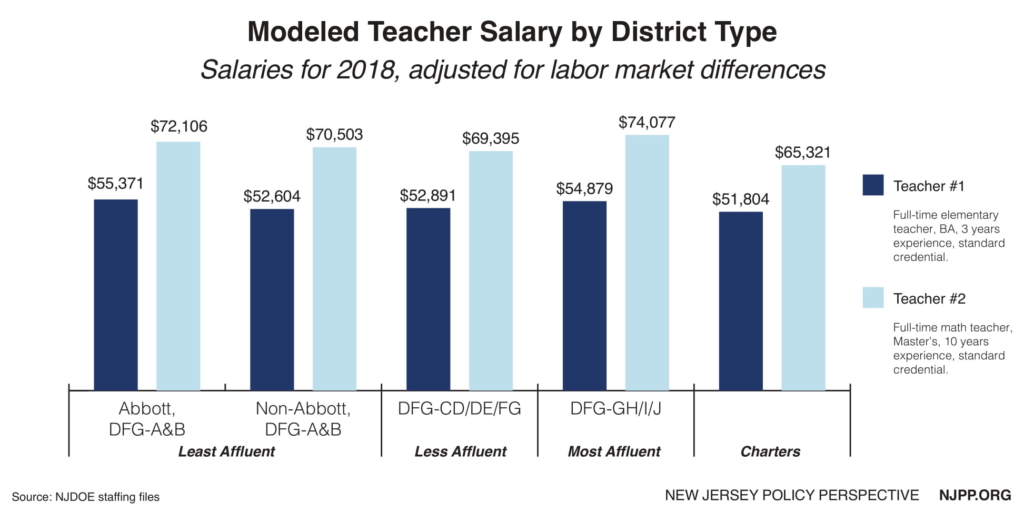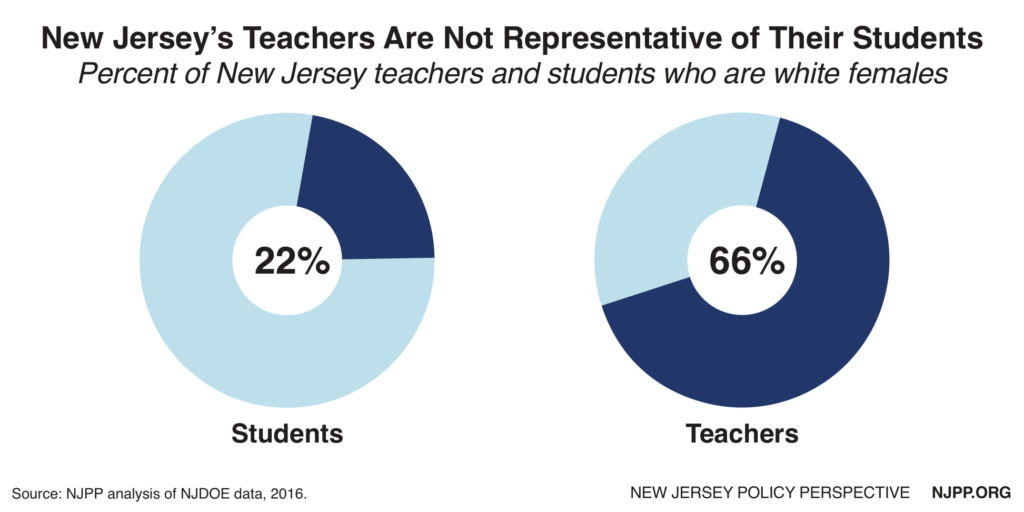To read a PDF version of the report summary, click here.
To read a PDF version of the full report, click here.
The Garden State has, on average, one of the best statewide systems of education in the nation, providing an important foundation for New Jersey’s communities to thrive. At the heart of this system is a workforce tasked with ensuring every student has access to a thorough education that can only be delivered by well-trained, highly qualified teachers.
Maintaining an educator workforce of the highest quality must be a top policy priority for New Jersey’s schools to excel. In addition, the state’s student body deserves a teacher corps that is as diverse as they are, especially given recent research that shows the positive impact of teacher diversity on student achievement. By this metric, New Jersey’s teacher workforce falls short of reflecting the diversity found in classrooms across the state, due in part to a legacy of racism and the challenges created by economic and racial inequities.
Given the crucial role teachers play in educating New Jersey’s children and leaders of tomorrow, it’s surprising that so little attention has been paid, until now, to the characteristics of New Jersey’s workforce. In this report, I take an in-depth look at New Jersey’s teachers: who they are, how they are paid, and how they vary across different types of school districts. My findings are:

- Teachers in New Jersey make substantially less than similarly educated workers. Further, teacher benefits – pensions and health care – do not appear to make up for the gap in wages.
- Much of the gap in teacher wages can be explained by the gender wage gap; however, college-educated women still see a decline in pay when they choose to teach.
- Teacher salaries tend to be lower in less-affluent school districts.
- New Jersey’s teachers don’t look much like the state’s student population: teachers are overwhelmingly white and female, and there is little indication the state’s teaching workforce is becoming more diverse.
Based on these findings, I recommend:
- New Jersey must offer competitive wages and other compensation to attract qualified workers into teaching.
- Given the wage gap for teachers, New Jersey should not degrade the value of teacher pensions and benefits, which help to close that gap.
- The state needs to make teacher compensation competitive in all of its districts, not just the affluent ones.
- New Jersey needs to take steps to make its teacher workforce more diverse.
Teachers Matter – Yet They Are Paid Less Than Similarly Educated Workers
While research shows that neither teachers nor schools can completely close the “opportunity gap” for disadvantaged students, the quality of teachers can and does affect student outcomes. Attracting well-qualified candidates into the teaching profession is critically important if New Jersey is to develop an educated workforce and overall thriving economy in the coming decades.

This report finds that teachers in New Jersey are paid significantly less than similarly educated workers. When controlling for hours and weeks worked, age, and geographic differences in the cost of labor costs, college graduates find they will earn much less if they choose to teach.
Previous research finds little reason to believe that teacher pensions and health care benefits make up for this gap. Any further of erosion of those benefits, however, is likely to make the total compensation gap for teachers even worse.
Part of the wage gap is explained by the gender pay gap; however, women who teach still suffer a significant wage penalty. The returns to earning a master’s degree are also much smaller for teachers than for other workers.
A Demographic Bubble in the Teaching Workforce
Teachers in New Jersey are younger than they were two decades ago: a demographic bubble has moved through the teaching workforce. But another bubble is coming; in two to three decades, many teachers will reach retirement age. This may be the best possible time for the state to strengthen and support its teacher pension system before another wave of teachers moves into retirement.

Teacher Pay Lags in Less-Affluent School Districts
All school districts should be able to compete for the best teacher candidates. Yet teacher pay varies significantly across different school districts. Experienced teachers will make more, on average, in the most affluent school districts. Charter school teachers make significantly less than public district teachers, even adjusting for experience.

Challenges Promoting Teacher Diversity
Recent evidence finds that students of color respond positively when more teachers of color are in front of their classrooms. Yet developing a diverse teaching workforce remains a challenge in New Jersey.

New Jersey’s teachers don’t look much like the state’s students: while 22 percent of students in 2016 were white females, white women made up 66 percent of the teacher workforce. The state should develop strategies – including offering competitive pay to highly-qualified teacher candidates – to bring more workers of color into teaching.
* * *
All of New Jersey’s students deserve a highly qualified and diverse teacher workforce. Yet teacher compensation lags behind other professions, making the recruitment of the best possible teacher candidates an ongoing challenge. The state should implement policies to strengthen teacher pay, protect benefits that help close the teacher wage gap, allow districts to compete fairly for prospective teachers, and promote a diverse teaching workforce.

